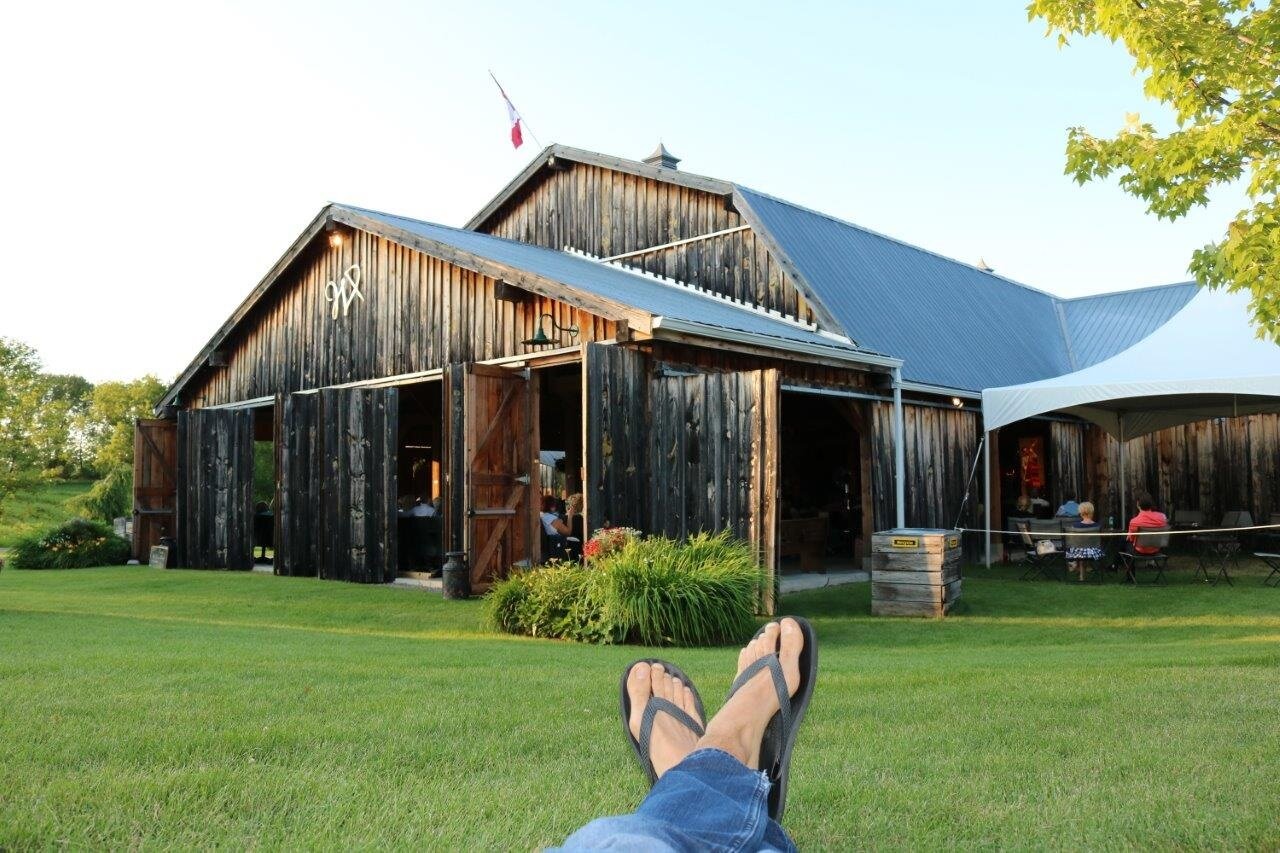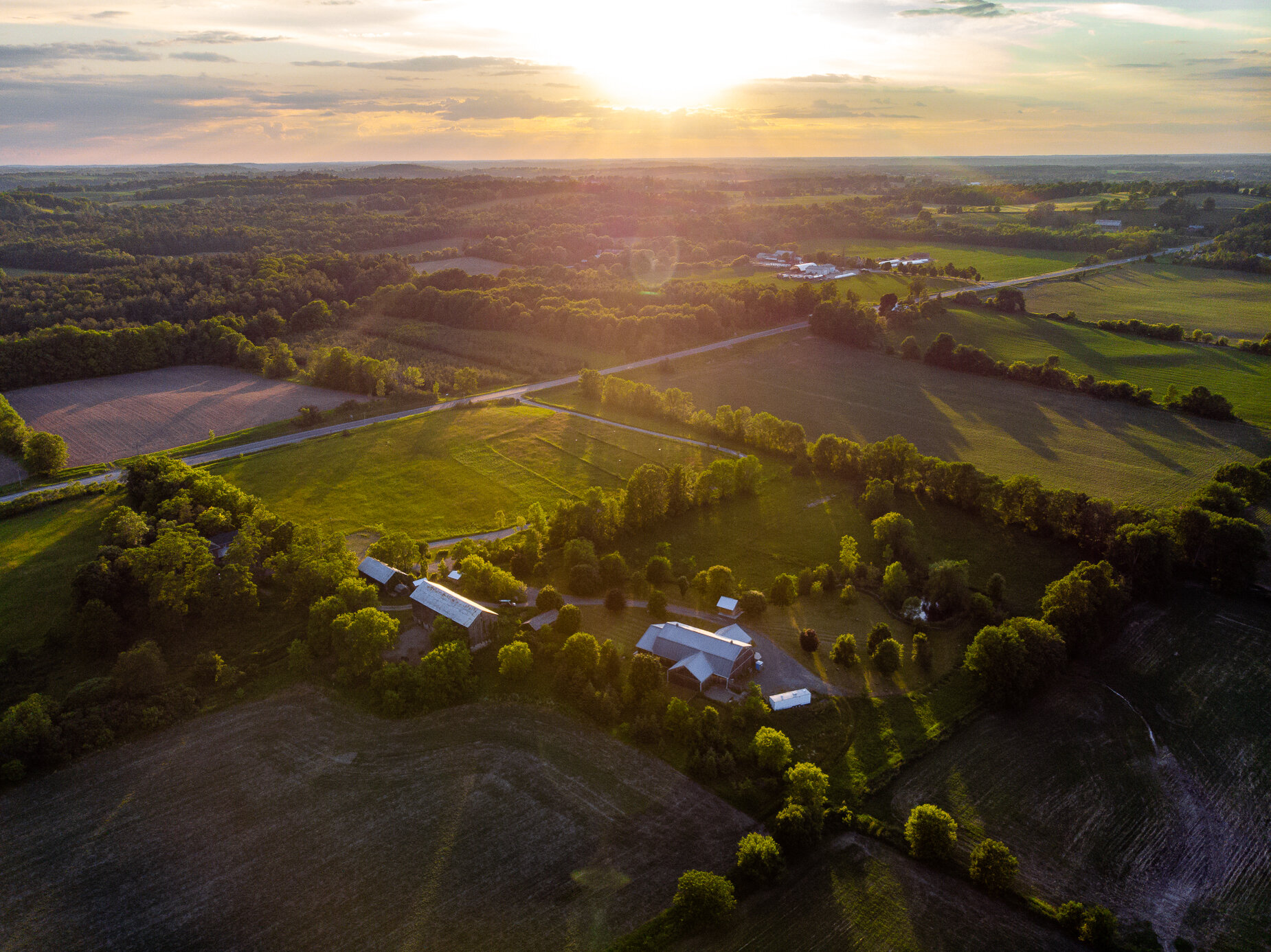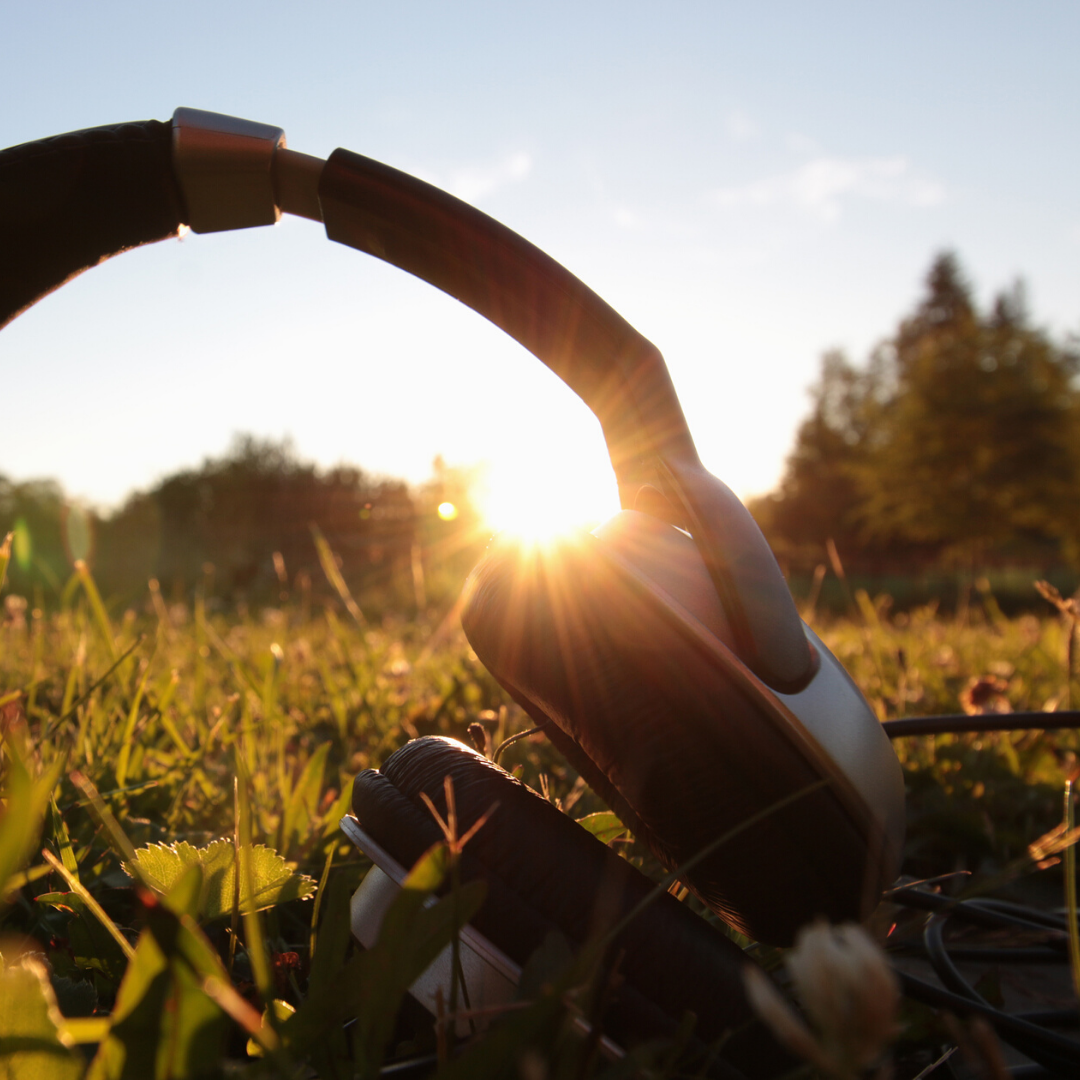Sounds in Nature
The Mary West Nature Reserve
Located right across the road from Westben is the Mary West Nature Reserve (38 hectares/95 acres)—home to towering white pines, spring peepers, a beautiful river, and the at-risk eastern wood pewee. Donated to the Nature Conservancy of Canada (NCC) through the estate of Mary West in 1991 – a descendant of the Wests who originally owned the farm at Westben — the property protects wetlands and forests in the Trout Creek and Trent River watersheds. The reserve is an important part of the local conservation network, helping to provide carbon storage, flood mitigation, and clean drinking water to the local community.
The forests and wetlands of the Mary West Nature Reserve make it an important habitat for many native species, including species at risk like butternut, wood thrush, and snapping turtle. Removing invasive species, restoration activities, and providing visitors with a safe and enjoyable experience are just some of the ways the NCC cares for the Mary West Nature Reserve.
Westben’s Sound and Environmental Partnerships
Photo by Steve Dagg of Amy Hillis performing in The Mary West Nature Reserve
Westben is excited to continue developing an ecomusicological relationship with the Nature Conservancy of Canada (NCC). One of the things that makes the Westben experience unique is its sound relationship with its surrounding environment.
Imagine the doors of the timber frame Barn rolling open to the meadow as the sounds of birds, breezes and leaves intermingle with musical outpourings—welcoming and enhancing each other. Westben is a venue that embraces all kinds of anthrophony (sounds made by humans), biophony (sounds made by non-human living organisms) and geophony (sounds made by non-living entities such as the wind, rain, and thunder).
Music in Nature - Sound Installation & Nature Walk 2021 & 2022
A recent ecomusicology project in collaboration with the NCC was the 2021 Music in Nature sound installation & nature walk created by sound engineer Andy Thompson. Imagine the sounds that live in the head of Northumberland Music Studio owner (and Westben Sound Engineer) Andy Thompson! Now imagine those sounds in a guided magical sound installation amidst the beauty of the Mary West Nature Reserve, just minutes from Westben.
Sounds in Nature Experience 2023
SEPTEMBER 30TH & OCTOBER 1ST, 2023 AT 10:00 AM
(please book early – limited capacity)
Enjoy a magical autumn morning amidst the ancient splendour of colourful forests, peaceful streams and turning leaves. Watch as its beauty is transformed into music by Ben Finley & friends! Small groups of 15 meet on the Willow Hill then are guided on a nature walk through the Mary West Nature Reserve just across the road from Westben, then home to the Westben Campfire for local flower-based refreshments, snacks, and conversations with the artists. An amazing music & nature wellness experience! And uniquely Westben…
“This experience allows you to connect with nature in a way you would never expect. The combination of forest bathing and music brings the forest to life, as if it is singing to you. To see (hear) how every sound in nature can be turned into a piece of music was unbelievable.”
– Kristin Schaab
An earlier ecomusicological project in collaboration with the NCC has been the 2020 Spring Seed Project. Part of the NCC’s effort of building public trails, removing invasive species, and restoring natural habitats was set to be done in partnership with schools in the area in the spring of 2020, but COVID-19 put that on hold. As an alternative, Ali Giroux—a conservation biologist with the NCC—gave seed packages to the Westben Youth Choirs and Campbellford & District Horticultural Society to grow Upland White Goldenrod and Big Bluestem and then plant them out in the gardens to promote native plant diversity and support pollinators. With these seed packages, Westben included musical prompts, initiating an ongoing The Community Sound Garden Project as an opportunity to connect through the environmental sounds in our homes and gardens.
Stay tuned for future ecomusicological talks, restoration events, environmental musical works, and other exciting ecological partnerships at Westben.
Wherever you are joining us from today, we invite you to participate and contribute to our ongoing Community Sound Garden. What sounds are happening in your environment?
Send us poems, reflections, songs, and soundscapes from your environment in the form below! Or email westben@westben.ca!




See our most recent submissions below if you need some inspiration!
Big Questions
Written by Cara Eddie
“How do they make grass?” she asks.
And “how do you make clouds?”
These are important things.
She needs to know, halfway through a cookie.
“How do you make the colour black,
and how do the different colours on clothes not run together?
And why is a cucumber green? And pistachios?”
And through some magic, our answers all circle back
to growing things.
To chlorophyll, and squid ink,
and the water cycle.
To her little pots of earth
with slim shoots
of new big bluestem
which she does not quite accept as an answer. “No, like this!” As she gestures low to the ground, like a green thatch of lawn.
And we try to convince her, yes, it’s the same, all the little plants together.
Earth and sun and rain and seeds.
That is how they make grass.
.
Written by Brian Finley
In golden silence, I hear a world of possibility... Birds sing along, correcting the wrong notes. Goodness, grace.
Did you know that sound helps plants grow?
Written by Ben Finley
Recent scientific evidence shows that sound contributes to plant growth and resilience. Humans hear sound through their eardrums. Fruit flies use their antennae to hear sound, while snakes use their jawbones! Plants are highly sensitive organisms that use sound to react to their environment. Sound waves travel efficiently through soil and help the roots grow. Did you know that bees buzz at a certain frequency which signals flowering plants to produce pollen!
Here’s a question: do plants make sound? Yes! Plants emit quiet audio acoustic emissions ranging between 10-240 Hz (that’s a little lower than the lowest note of the piano to just below middle C). They also emit ultrasonic acoustic emissions outside of human hearing (20-300 kHz)! Your dog can hear these ultrasonic frequencies (up to 45 kHz) and bats too—they really are the ultimate sopranos; they can generate echolocation calls up to 150 kHz. Elephants are the bass players; they use infrasound below 20Hz for communication over long distances. Although plant bioacoustic research uses very specific parameters (e.g. volume, frequency, time length), why not try it yourself!
References: Gagliano, M., Mancuso, S., & Robert, D. (2012). Towards understanding plant bioacoustics. Trends in Plant Science, 17(6), 323-325. https://doi.org/10.1016/j.tplants.2012.03.002 Jung J, Kim S-K, Kim JY, Jeong M-J and Ryu C-M (2018) Beyond Chemical Triggers: Evidence for Sound-Evoked Physiological Reactions in Plants. Front. Plant Sci. 9:25. doi: 10.3389/fpls.2018.00025 For more, check out “Plant Bioacoustics” and also see the National Conservancy of Canada’s blog.
From www.birdandmoon.com
Image from www.birdandmoon.com











